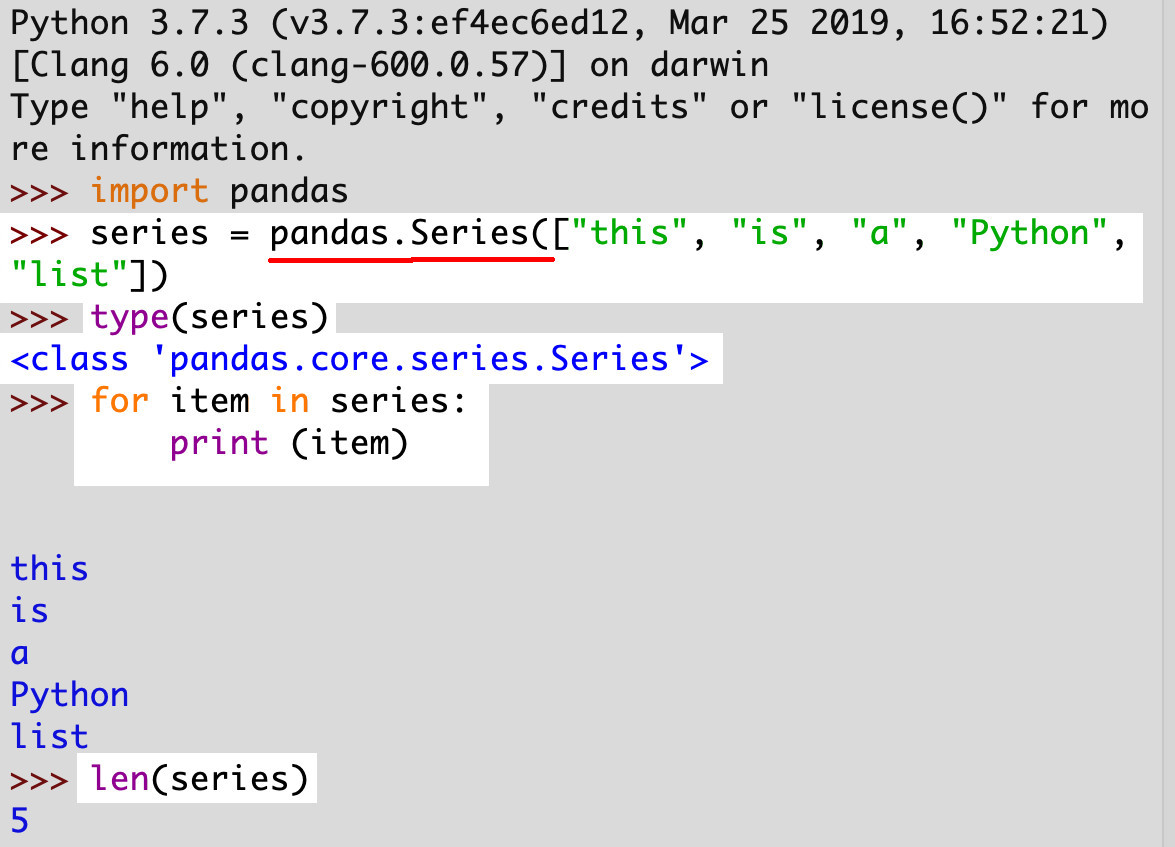
This structure, a row-and-column structure with numeric indexes, means that you can work with data by the row number and the column number. Importantly, each row and each column in a Pandas DataFrame has a number. Pandas dataframes have indexes for the rows and columns So Pandas DataFrames are strictly 2-dimensional.Īlso, the columns can contain different data types (although all of the data within a column must have the same data type).Įssentially, these features make Pandas DataFrames sort of like Excel spreadsheets. Specifically, they are 2-dimensional structures with a row and column form. To understand the iloc method in Pandas, you need to understand Pandas DataFrames.ĭataFrames are a type of data structure.
Pandas python how to#
… it focuses on data manipulation with DataFrames.Īgain, in this tutorial, I’ll show you how to use a specific tool, the iloc method, to retrieve data from a Pandas DataFrame.īefore I show you that though, let’s quickly review the basics of Pandas dataframes.

Pandas also focuses on a specific part of the data science workflow in Python.

Pandas is a data manipulation toolkit in Python You can use matplotlib for simple tasks like creating scatterplots in Python, histograms of single variables, line charts that plot two variables, etc.Īnd then there’s Pandas. Matplotlib provides a data visualization toolkit so you can visualize your data. You need to perform data visualization to explore your data and understand your data. This is true even if you’re working on an advanced project. Commonly, when you’re doing data science or analytics, you need to visualize your data. Matplotlib focuses on data visualization. It’s a data manipulation toolkit specifically for numeric data. Those are the big ones right now.Įach of those toolkits focuses on a different part of data science or a different part of the data workflow.įor example, NumPy focuses on numeric data organized into array-like structures. There are a few core toolkits for doing data science in Python: NumPy, Pandas, matplotlib, and scikit learn. Everything will be more cohesive if you read the entire tutorial.īut, if you found this from a Google search, and/or you’re in a hurry, you can click on one of the following links and it will take you directly to the appropriate section:īefore I explain the Pandas iloc method, it will probably help to give you a quick refresher on Pandas and the larger Python data science ecosystem. It will provide a refresher on some of the preliminary things you need to know (like the basics of Pandas DataFrames). Having said that, I recommend that you read the whole tutorial. Learning is much easier when the examples are simple and clear. When you’re learning new syntax, it’s best to learn and master the tool with simple examples first. To make it easier, this tutorial will explain the syntax of the iloc method to help make it crystal clear.Īdditionally, this tutorial will show you some simple examples that you can run on your own. The syntax is a little foreign, and ultimately you need to practice a lot to really make it stick.

Working with data in Pandas is not terribly hard, but it can be a little confusing to beginners.

This tutorial will explain how to use the Pandas iloc method to select data from a Pandas DataFrame.


 0 kommentar(er)
0 kommentar(er)
